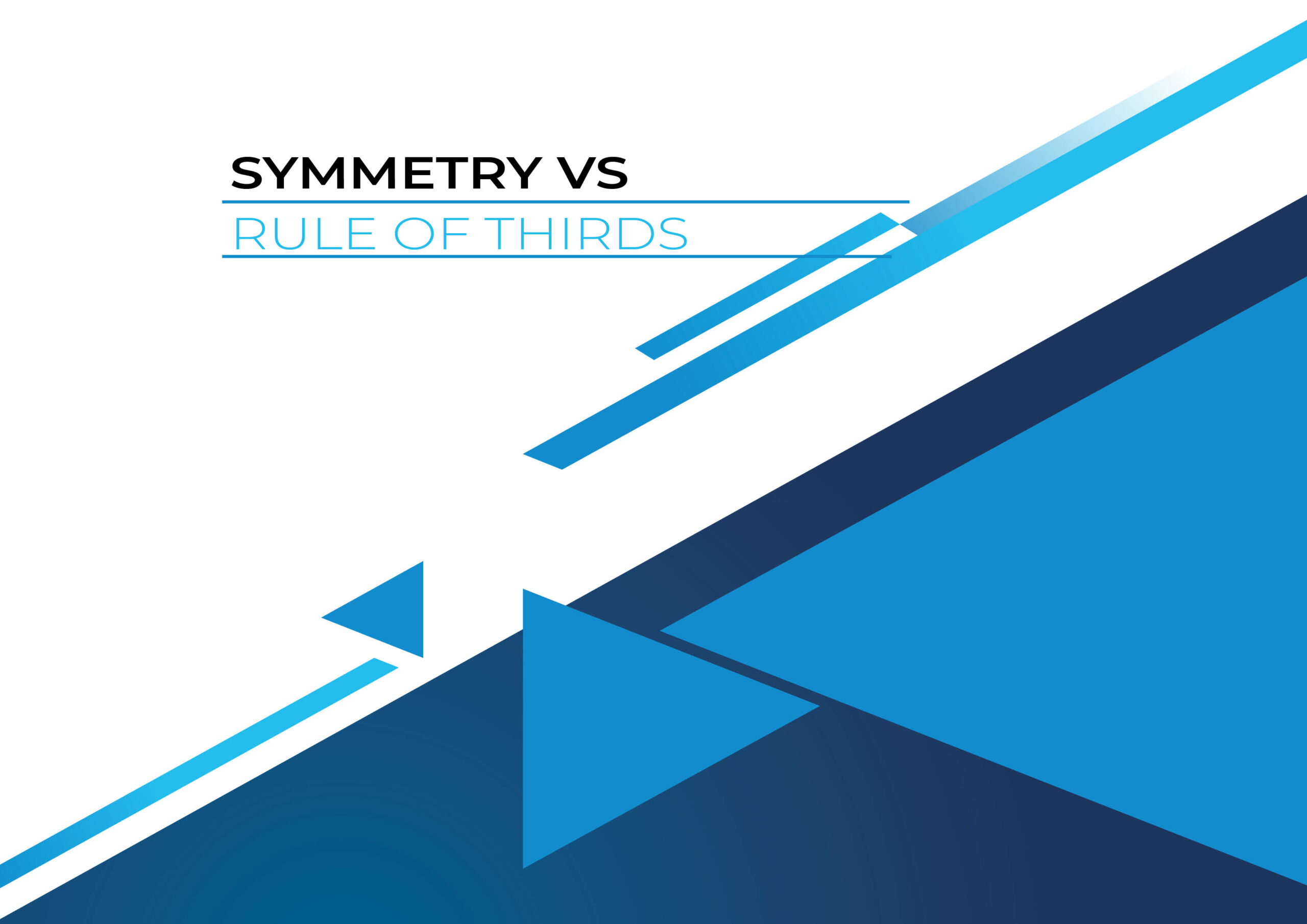Content Strategy

R2.5 Asymmetrical Balance vs. Symmetry:
Overview
In this module, we explore the rule of thirds and symmetry, two key compositional techniques in visual arts that guide viewer engagement and enhance image balance. The rule of thirds, which involves dividing an image into nine equal parts, introduces depth and perspective by positioning subjects off-center, thereby encouraging visual exploration. Symmetry, on the other hand, provides a pleasing sense of order and visual coherence by centering and balancing elements within the composition. These complementary principles serve as crucial tools for artists to effectively highlight their subjects, guide viewer gaze, and more effectively communicate their artistic vision.
By The End of This Lesson Students Will Be Able To
- Understand and apply the rule of thirds and symmetry as essential techniques in visual arts for creating engaging and balanced compositions.
- Utilize the rule of thirds in photography to create depth and perspective; this involves dividing the image into nine equal parts (thirds horizontally and vertically) and placing main points of interest along these lines or at their intersections.
- Appreciate that using the rule of thirds guides the viewer’s gaze across the image, highlights the subject, and enriches the viewer’s overall visual experience.
- Recognize that symmetry in compositions provides balance and harmony, guiding the viewer’s gaze towards the center of the image.
- Implement symmetry in photos, even without geometric shapes, by framing subjects in a balanced way, creating a sense of equilibrium in the composition.
- Acknowledge that symmetry elicits a pleasing sensation in the viewer by creating a sense of order and visual coherence, enhancing the impact and memorability of a photograph.
- Recognize the rule of thirds and symmetry as two sides of the same compositional coin, both providing structure and directing the viewer’s attention to the subject.
- Learn to toggle between the rule of thirds and symmetry, selecting the most appropriate technique for each specific shot.
- Understand that effective use of these complementary principles enables clear conveyance of the subject, engagement of the viewer’s eye in a visually pleasing manner, and enhanced communication of the artist’s vision.
Course Content
Rule of Thirds (Asymmetrical Balance) vs. Symmetry:
The rule of thirds and symmetry are two distinct yet complementary compositional techniques in visual arts, including photography, painting, and cinematography. By understanding and applying these principles, photographers can create visually engaging and effective compositions that guide the viewer’s gaze to the subject and provide a harmonious sense of balance.
For example, during a portrait session or a wedding photoshoot, a photographer might apply the rule of thirds to create a sense of depth and perspective within an image. This principle involves dividing the image into thirds, both horizontally and vertically, resulting in nine equal parts. The main points of interest, such as the bride and groom or a portrait subject, are then placed along these lines or at their intersections. By positioning the subject off-center, the viewer’s gaze is drawn to follow the lines or shapes leading from one part of the composition to another, effectively highlighting the subject while also inviting the viewer to explore the entire visual space, enriching the overall experience.
Conversely, symmetry focuses on creating a sense of balance and harmony within a composition. Symmetrical elements, such as a wedding aisle or a symmetrical backdrop during a portrait session, can guide the viewer’s gaze towards the center of the photo, where the subject is placed. This technique allows the viewer to perceive the subject and the background visual space in an organized and aesthetically pleasing manner. Even when not working with geometric shapes, photographers can create symmetry by framing the subject in a balanced way, whether by centering the subject with an evenly distributed background or by utilizing other elements to create a sense of equilibrium in an off-center composition.
The beauty of symmetry lies in its ability to elicit a satisfying feeling in the viewer. When a composition achieves balance and harmony, it creates a sense of order and visual coherence that appeals to the human brain. This gratifying sensation can enhance the impact of a photograph and make it more memorable.
In essence, the rule of thirds and symmetry serve as two sides of the same compositional coin, both providing a sense of order and structure within a photograph. While the rule of thirds utilizes asymmetry to draw attention to the subject and encourage exploration of the visual space, symmetry offers a harmonious balance that directs the viewer’s gaze towards the center. Both techniques effectively position the subject in a way that enables viewers to identify and appreciate the main point of interest, as opposed to subjects placed near the outer edges of the frame, which may struggle to capture attention. As our go-to compositional techniques, we should continuously switch between the rule of thirds and symmetry, thoughtfully selecting the most suitable approach for each particular shot. By harnessing the power of these complementary principles, photographers can create impactful images that clearly convey the subject and engage the viewer’s eye in a visually pleasing manner, ultimately enhancing their ability to communicate their artistic vision and captivate their audience.




Cognitive Engagement Questions
Assignment #1: Rule of Thirds (Assignment Number: PHO1041-RT)
Subject: Applying the Rule of Thirds in Photography
Shoot a series of at least 5 photographs where you actively apply the rule of thirds to guide composition. In each image, place the subject or a significant point of interest at an intersection of the thirds or along the lines. Explain your process and how using this rule enhanced the depth, perspective, and overall visual appeal of your photographs.
Assignment #2: Symmetry (Assignment Number: PHO1041-SYM)
Subject: Symmetry in Photography
Create at least 5 images using symmetry to guide your composition. Look for naturally occurring symmetry or frame your subjects in a balanced way to create a sense of symmetry. Discuss how employing symmetry affected the viewer’s gaze, balance, harmony, and overall impact of your images.
Assignment #3: Rule of Thirds vs. Symmetry (Assignment Number: PHO1041-ROTSYM)
Subject: Comparing the Rule of Thirds and Symmetry in Photography
Choose a single subject or scene and photograph it twice: once using the rule of thirds, and once using symmetry. Write a brief analysis of the two images, explaining the differences in the viewer’s experience and engagement, and the overall visual appeal when applying each technique. Discuss which method you think worked better for this specific shot and why.
When submitting your assignment, please use the following format in the email subject: “Assignment Number – Your Name – Assignment Topic”. For example, “PHO1041-RT – Jane Smith – Applying the Rule of Thirds in Photography”. Please email your completed assignments and corresponding analysis to clintonali@gmail.com for evaluation and constructive criticism. Remember to save your original image files for your own records. Can’t wait to see your thoughtfully composed shots!
© 2023 Karimah Clinton Academy. All rights reserved.
